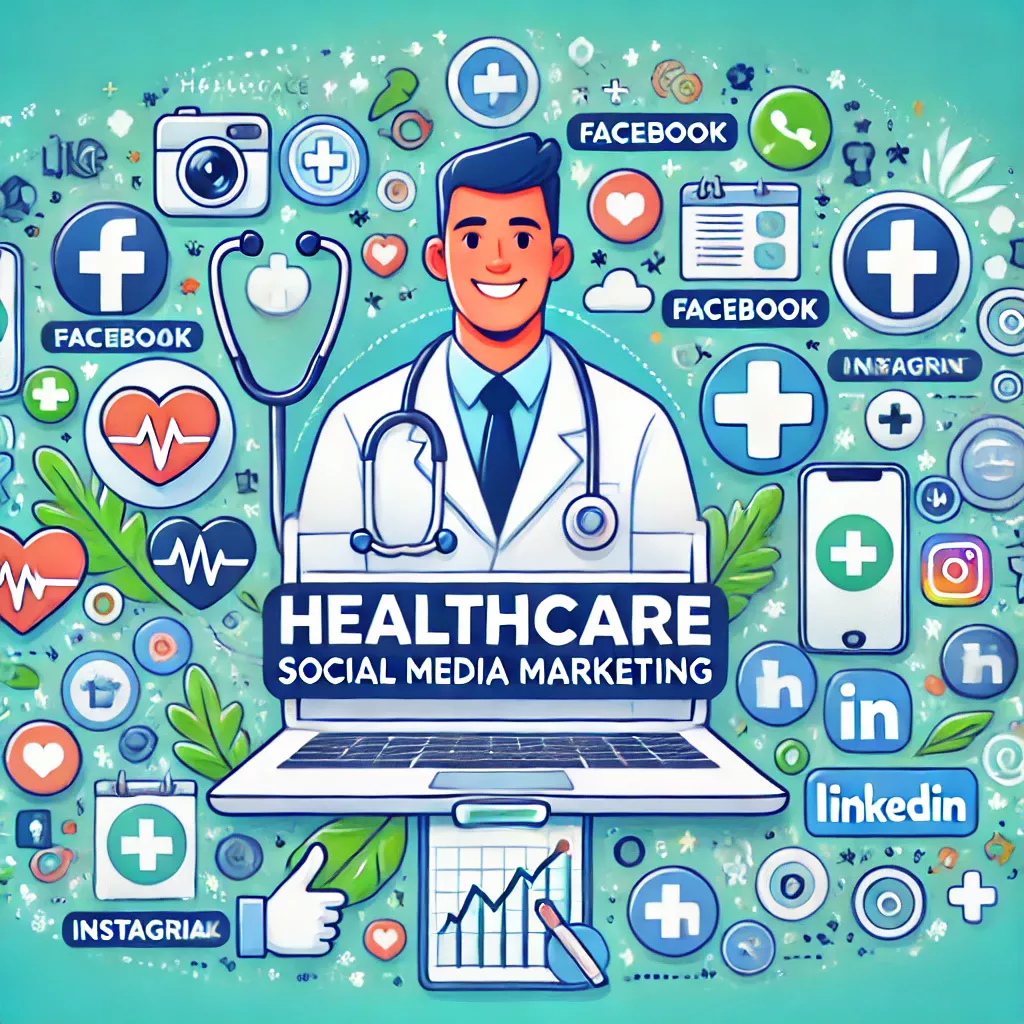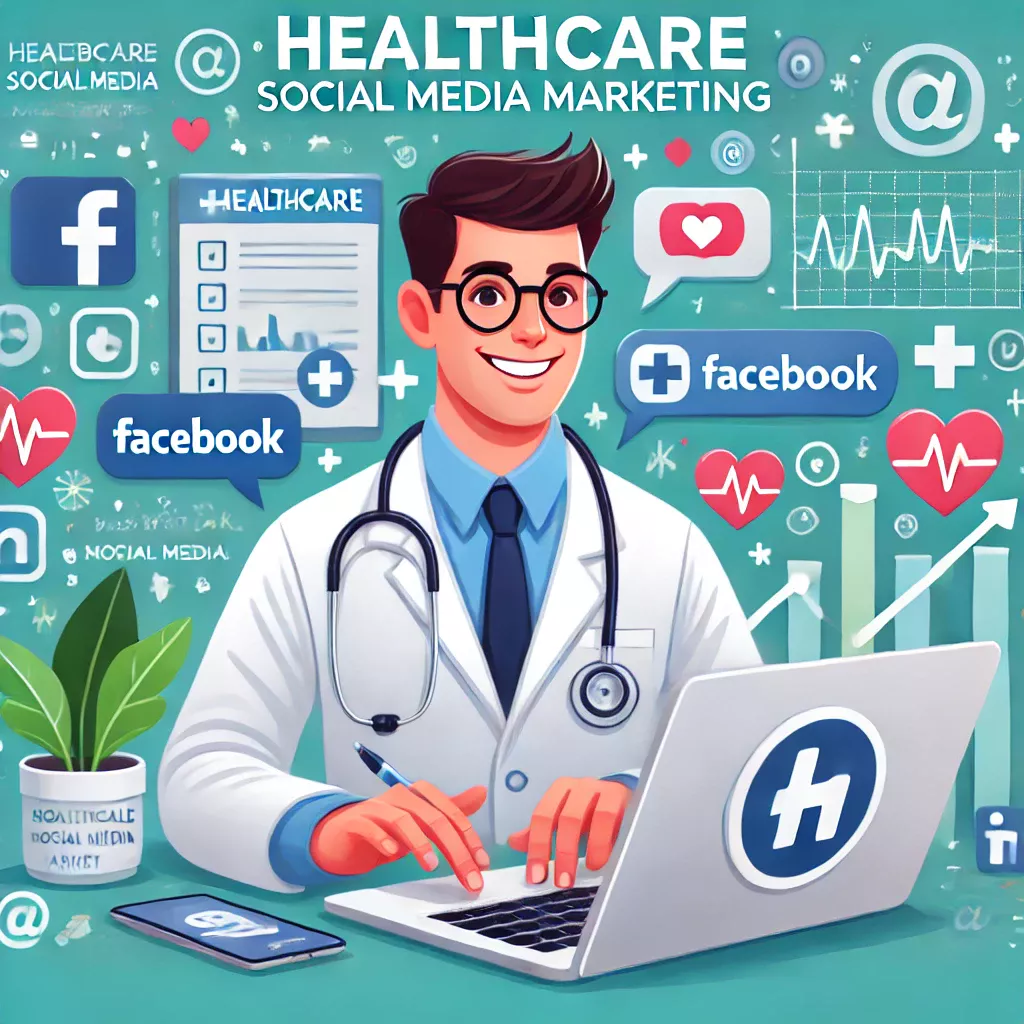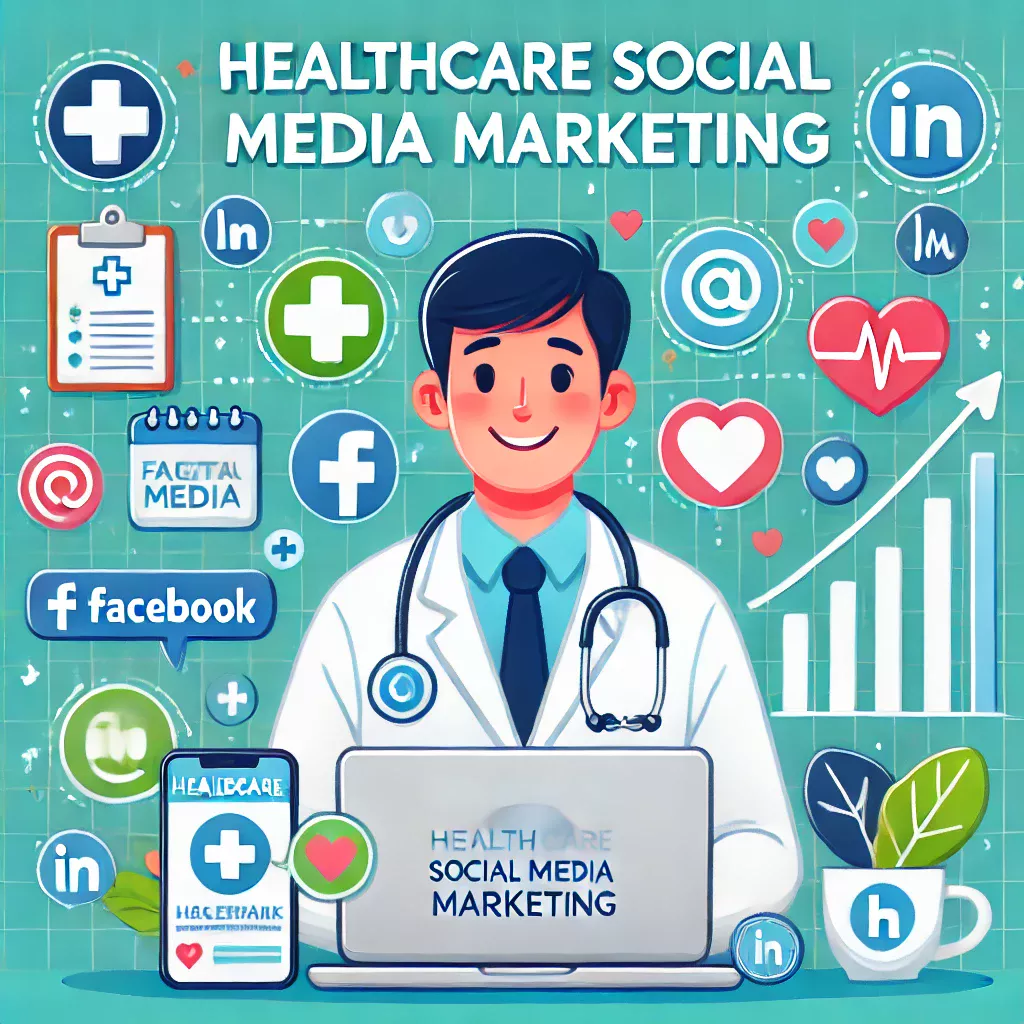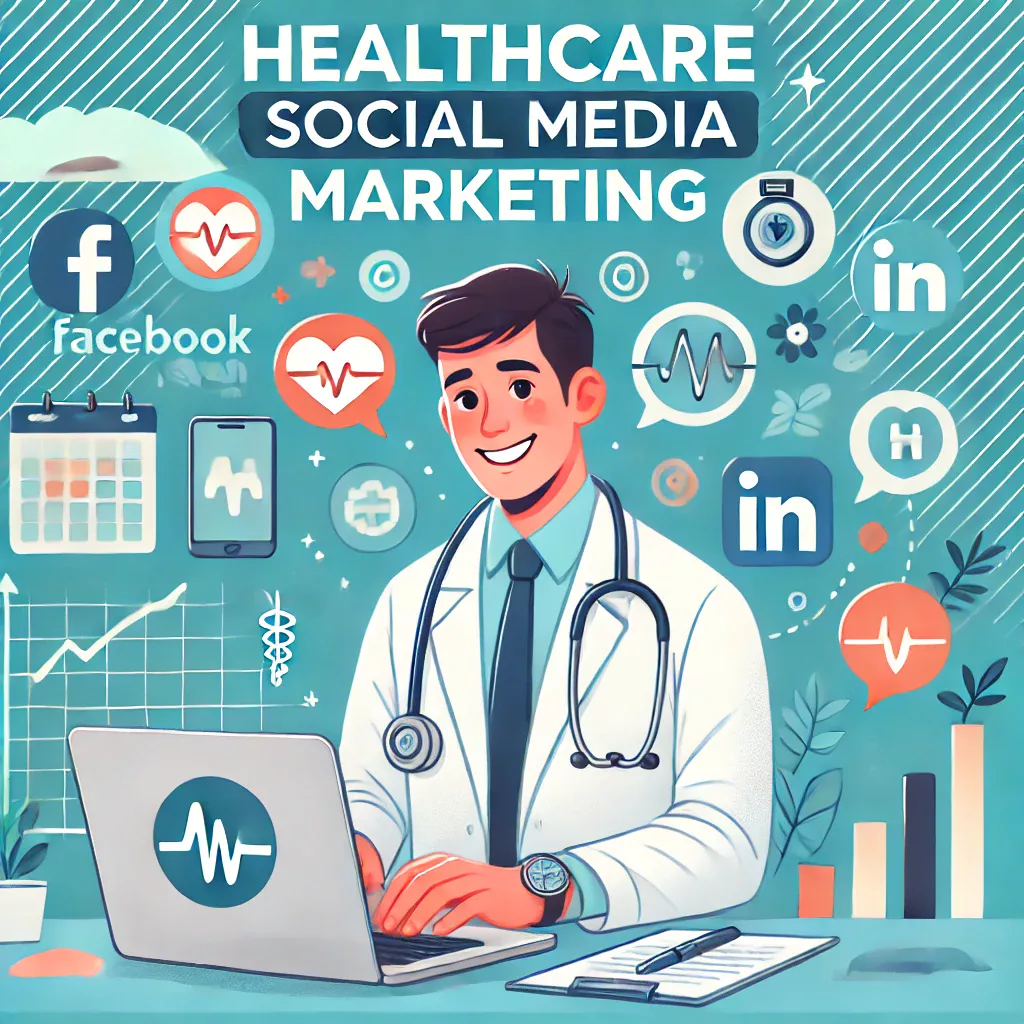Discover how HIPAA-compliant healthcare social media marketing in 2026 helps providers engage patients, build trust, and drive growth with secure, compliant remarketing and advertising strategies.
You’ll love this article: HIPAA Compliant Marketing Solutions for Doctors
Why Social Media Is Essential for Healthcare Providers
Healthcare social media marketing is no longer an optional extra for medical practices. It is now one of the most important ways to reach patients, build trust, and maintain a strong reputation in the community. Patients spend hours each day on platforms like Facebook, Instagram, TikTok, and YouTube. If your clinic is not present where they are spending time, you are missing valuable opportunities to connect and educate.

Unlike traditional advertising, social media marketing for healthcare allows you to speak directly to your ideal patients, share relevant information, and create a lasting brand presence. It combines the reach of digital media with the personal connection patients expect from healthcare providers.
Table of Contents
Understanding Healthcare Social Media Marketing
At its core, healthcare social media marketing is the strategic use of social platforms to achieve goals such as raising awareness, educating patients, and driving appointments. This can include both organic posting and paid advertising. Organic content builds relationships and establishes authority, while paid campaigns allow you to reach specific patient demographics with precision.
The most effective strategies combine both, using educational content to engage followers and targeted ads to reach those most likely to need your services.

Explore Dental Advertising: Facebook Ads for Dentists Made Simple
The Benefits of Social Media Marketing for Medical Practices
Social media offers healthcare providers unique advantages that other industries do not enjoy. First, healthcare is a trust-based service, and social platforms are a powerful way to demonstrate credibility. Second, patients often search for answers before seeking care, and informative content positions your clinic as a reliable source. Third, platforms like Facebook and Instagram allow highly specific location targeting, which ensures your marketing budget is spent only on people in your service area.
The Push vs. Pull Approach in Healthcare Marketing
Traditional healthcare marketing is largely pull-based. It depends on patients actively searching for services when they need them. Social media advertising is push-based. It allows you to place your clinic’s message in front of potential patients before they even begin looking for care.
Push marketing is particularly effective for specialties such as cosmetic procedures, dentistry, chiropractic, and wellness services. By reaching patients early, you can influence their decision-making process and keep your clinic top of mind.
Defining Clear Goals for Your Social Media Strategy
The first step in building a healthcare social media marketing plan is to define clear objectives. Common goals include raising brand awareness, increasing website visits, generating leads for consultations, and educating the public about healthcare topics. Having measurable goals ensures your efforts are focused and easier to evaluate.

Explore: Healthcare Advertising Agency Comparison: Top 10 in USA
Identifying the Right Patient Audience
Knowing your audience is critical. Consider the age, gender, location, and interests of the patients you want to reach. Equally important is understanding their motivations and concerns. A pediatric clinic will use very different messaging from a cosmetic surgery practice.
Each platform attracts different demographics. Facebook and Instagram are strong choices for family medicine, senior care, and general clinics. TikTok is better for reaching younger audiences, and YouTube works well for high-ticket treatments that require more patient education.
Creating High-Value Content for Patients
Content is the foundation of healthcare social media marketing. The most effective content educates, builds trust, and encourages action. Video is increasingly important, from short TikTok clips to longer YouTube explanations. Patient testimonials, behind-the-scenes tours, staff introductions, and preventive care tips all perform well.
Quality matters more than quantity. Content should be accurate, easy to understand, and aligned with your practice’s tone of voice.
Using Paid Social Media Advertising to Accelerate Results
Organic reach has declined in recent years, making paid media advertising essential for faster growth. Platforms like Facebook Ads and Instagram Ads allow precise targeting by location, age, gender, and even interests related to health. This ensures your budget is spent on the patients most likely to need your services.
A successful paid campaign in healthcare uses clear, benefit-focused messaging, strong visuals, and a simple call to action. For example, a dental clinic might promote a “Free Smile Consultation” campaign targeted to residents within 10 miles of their office.
Building HIPAA-Compliant Sales Funnels for Healthcare Social Media Marketing
Driving patient inquiries from social media is valuable — but in healthcare, every step of that funnel must follow strict privacy rules. A poorly designed lead capture process can turn a successful campaign into a compliance liability.

A HIPAA-compliant sales funnel ensures that all patient information is collected, transmitted, and stored in a secure, regulation-friendly way.
Learn More About Social Media Remarketing
Step 1: Start with HIPAA-Compliant Landing Pages
When a patient clicks your social media ad or post, they should land on a page hosted in a secure environment.
- Use SSL encryption (HTTPS) on every page.
- Avoid embedding unsecure third-party tracking tools without consent.
- Clearly display your privacy policy and HIPAA compliance statement.
Step 2: Use Secure Form Builders
Never use standard web forms that email patient data without encryption. Instead, use HIPAA-certified form solutions like Jotform (with a BAA), FormDr, or LuxSci.
- Collect only the minimum necessary information to schedule a call or consultation.
- Include consent checkboxes for marketing follow-up.
Step 3: Implement a HIPAA-Compliant CRM
Once a lead is captured, it must be stored in a secure Patient Relationship Management system or HIPAA-ready CRM such as IntakeQ, SimplePractice, or Salesforce Health Cloud.
- Access controls ensure only authorized staff can see PHI.
- All communications — email, SMS, reminders — must be encrypted.
Step 4: Create a Trust-Building Nurture Sequence
Social media ads often generate interest before urgency. A compliant follow-up sequence keeps your clinic top-of-mind:
- Educational email series about relevant treatments (without including specific patient details).
- Social retargeting ads with general health tips or service benefits.
- Secure links to book consultations or telehealth visits.
Step 5: Connect the Funnel to Your Compliance Framework
The funnel must be aligned with your email HIPAA compliance rules, including:
- Employee training for anyone handling leads.
- Documentation of policies for storing and deleting PHI.
- Regular audits of your marketing tools and integrations.
By designing regulation-friendly sales funnels, healthcare providers can confidently run high-performance social media campaigns without risking HIPAA violations — turning clicks into booked appointments while keeping patient privacy intact.
Learn 10 Game-Changing Healthcare Marketing Strategies in 2026
Local Optimization for Healthcare Social Media Campaigns
Most medical practices serve a defined geographic area, so location optimization is essential. In paid campaigns, target your ads to specific zip codes or a set radius around your clinic. Include location-specific keywords and hashtags in your content. Aligning your social strategy with your Google Business Profile further strengthens your local presence.
Staying Compliant and Maintaining Trust
Healthcare marketing must follow regulations such as HIPAA in the United States and GDPR in Europe. This means never sharing patient information without consent, avoiding medical claims that cannot be substantiated, and including disclaimers when necessary. Compliance is not just about avoiding penalties—it is about protecting patient trust.
Quick Read: How to Market a Mental Health Clinic in 2026
Measuring and Improving Campaign Performance
Social media success is built on testing and optimization. Review performance metrics regularly, such as engagement rate, click-through rate, cost per lead, and conversion rate to booked appointments. Identify which platforms, content types, and targeting methods are producing the best results, and adjust your strategy accordingly.
Emerging Trends in Healthcare Social Media Marketing for 2026
Short-form video will continue to dominate engagement. More clinics are incorporating patient-generated content, with consent, to add authenticity. AI-driven targeting is making it easier to reach very specific audiences. Integration with telehealth booking systems will allow patients to move directly from a social post or ad into a virtual consultation.

HIPAA Compliant Social Media Advertising Is Posible in 2026
Healthcare social media marketing is one of the most powerful tools available to modern medical practices. It can educate, build trust, and drive consistent patient growth when executed with strategy and care. The key is balancing valuable, accurate content with smart targeting and ongoing optimization.
Social Media Marketing FAQ
How has social media influenced the marketing of healthcare?
Social media has transformed healthcare marketing by making it easier for practices to connect directly with patients, share educational content, and build trust at scale. Platforms like Facebook, Instagram, and TikTok allow clinics to humanize their brand, while targeted ads help reach people actively seeking care.
How to market healthcare on social media?
Successful healthcare marketing on social media combines educational content, patient testimonials, and targeted paid campaigns. Use video to showcase expertise, run Meta Ads to capture high-intent patients, and maintain a consistent posting schedule to build long-term trust and visibility.
How can healthcare marketing be done in social media?
It starts with understanding your audience, selecting the right platforms, and crafting content that addresses patient concerns. Paid campaigns such as Meta Ads, TikTok Ads, and YouTube Ads can then amplify reach and drive leads, while analytics track what’s working.
How does social media play a role in healthcare marketing?
Social media acts as both a brand-building and lead-generation channel. It allows healthcare providers to share expertise, answer patient questions in real time, and use precision targeting to reach the right people at the right time.
How has social media affected healthcare marketing – pros and cons?
Pros: Direct patient engagement, increased brand awareness, cost-effective targeting, improved trust through reviews and testimonials.
Cons: Requires ongoing management, compliance with healthcare regulations, and risk of negative feedback becoming public.
Is social media an effective healthcare marketing tool?
Yes — when done strategically. Social media can generate new patient leads, strengthen your brand, and keep existing patients engaged, especially when combined with a full-funnel marketing approach.
What should and shouldn’t healthcare marketers put on social media?
Should: Educational tips, service highlights, patient success stories (with consent), health awareness campaigns, and staff introductions.
Shouldn’t: Share personal patient information without consent, make unsupported medical claims, or post unprofessional or off-brand content.